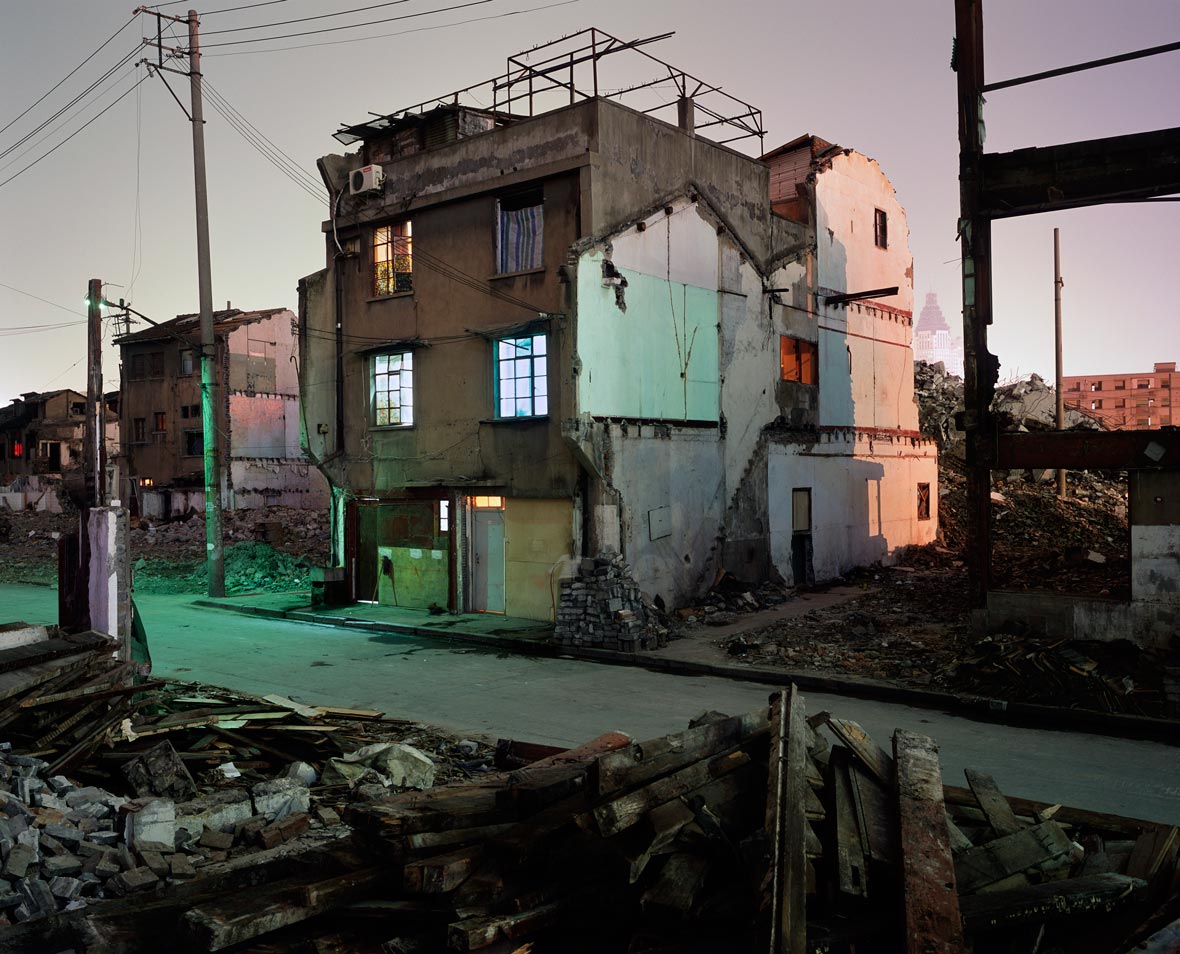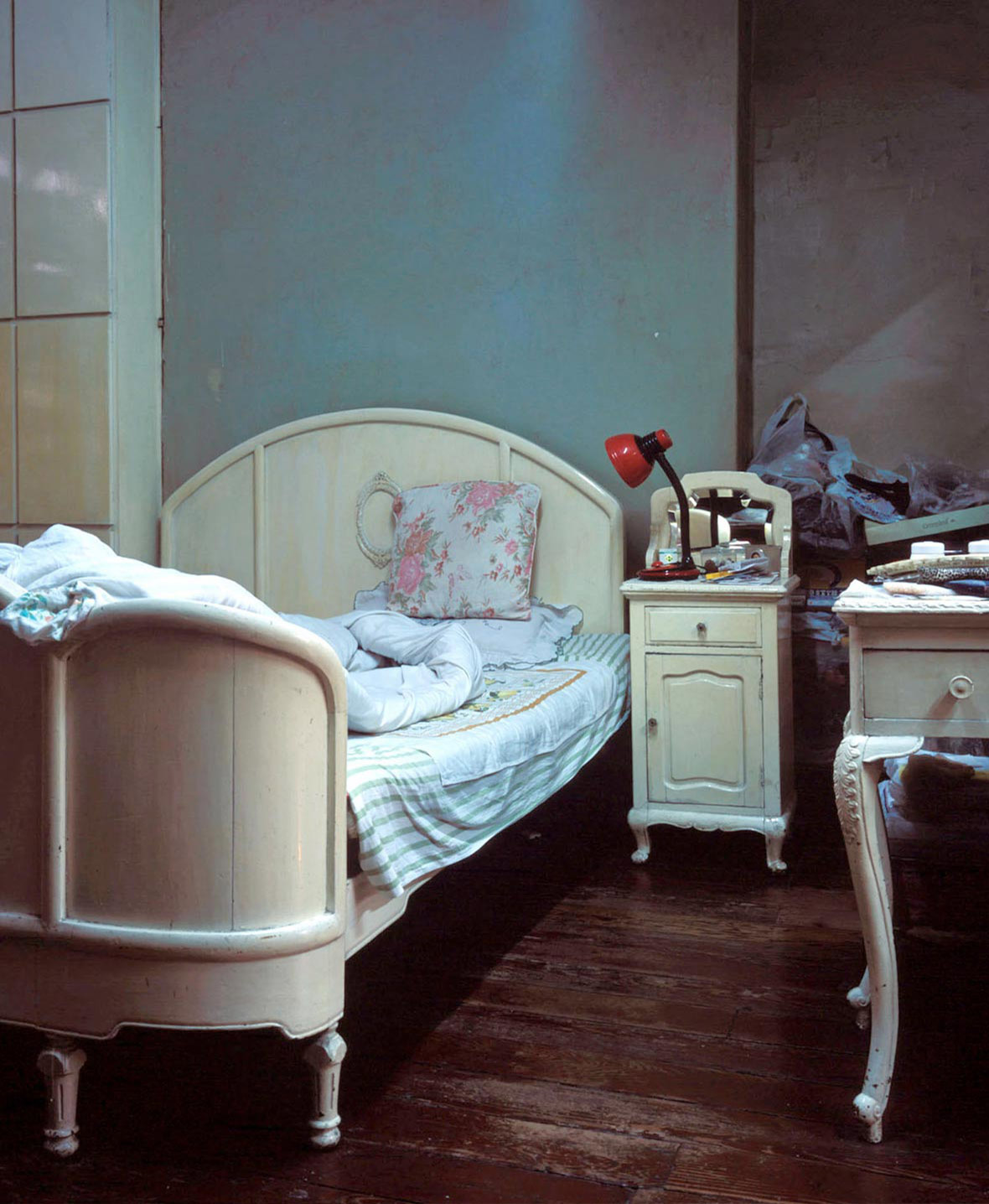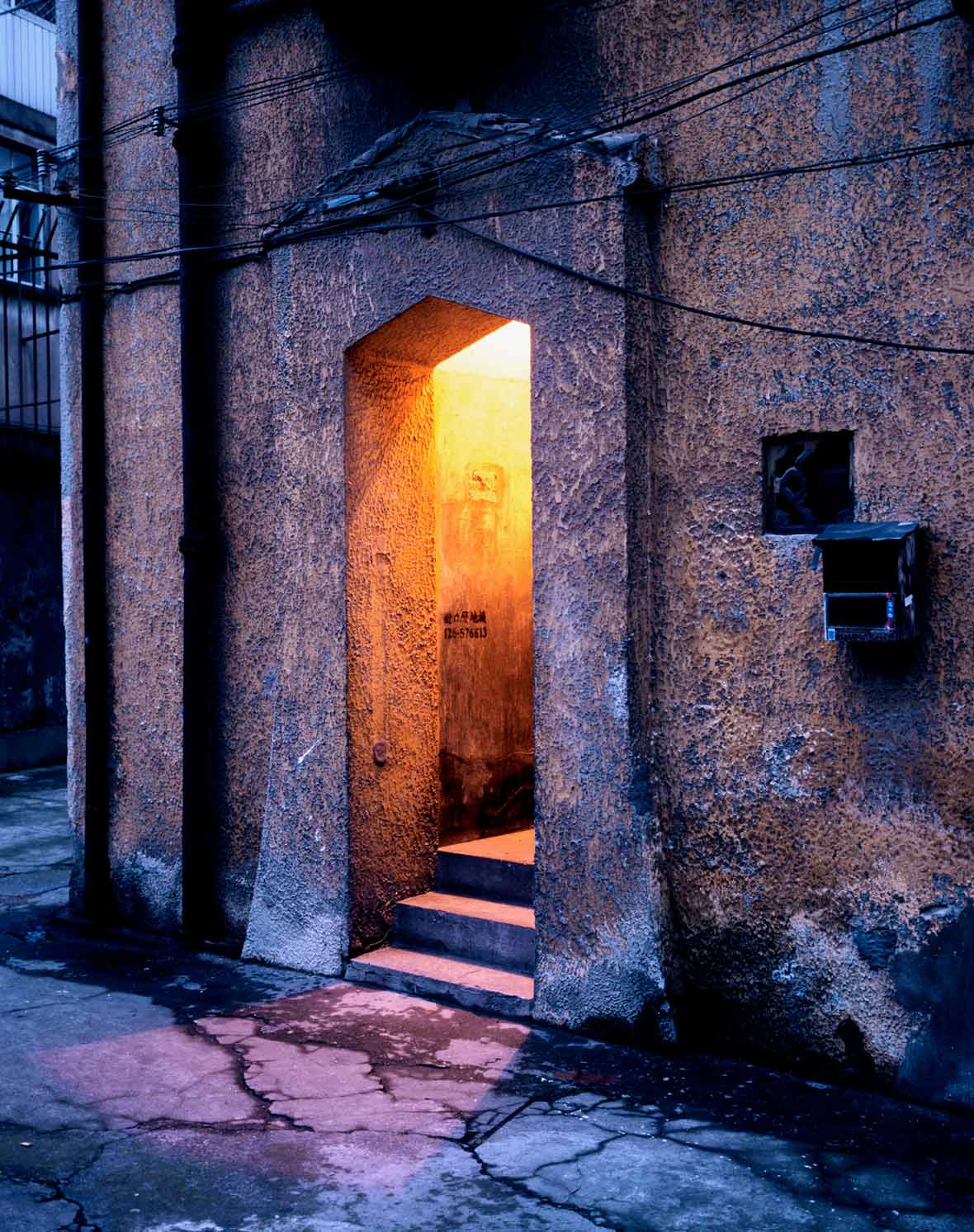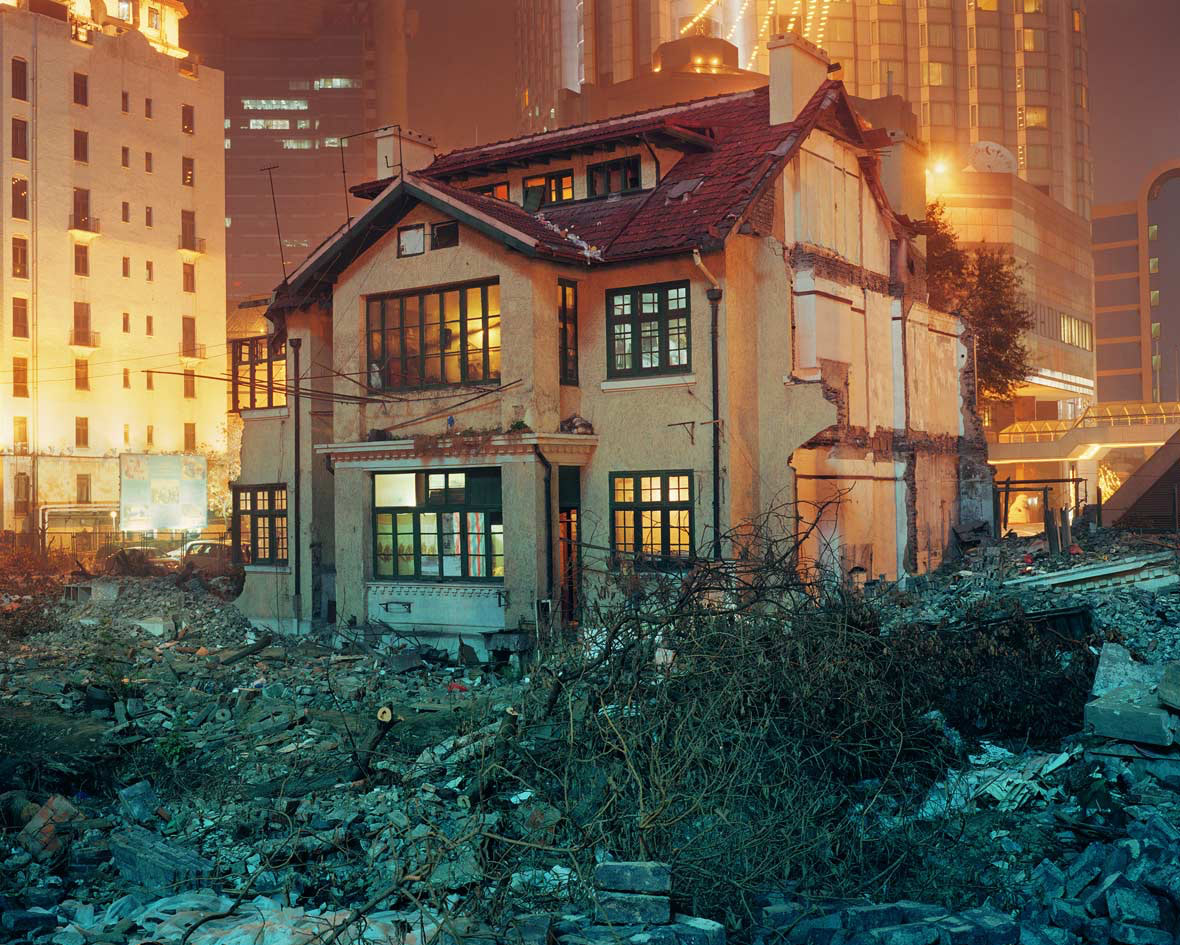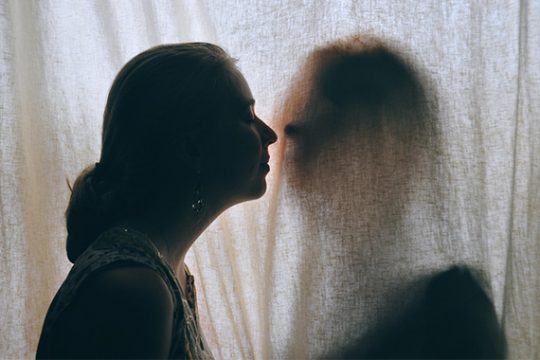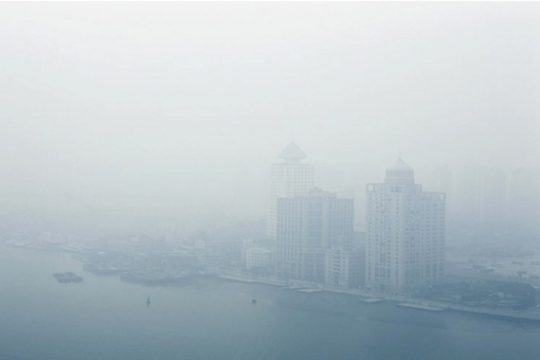
Canadian photographer Greg Girard has spent much of his career in Asia. As a result, many of his works are candid and stunning documentations of the social and physical transformations that have taken place throughout the continent. Some of his most well-known photo series capture moments and places that are now long gone, washed away with the changing times. Recently, Neocha spoke with Girard about Phantom Shanghai, a hauntingly melancholic photo series that documents the city’s jarring and rapid transformation into the skyscraper-filled behemoth that it is today.
加拿大摄影师Greg Girard在亚洲度过了他职业生涯的大部分时间,因而他的很多作品都直接并生动地记录了发生在这片大陆上社会和实体的变迁。他最负盛名的一部分作品捕捉并记录下那些在时光流转中模糊和淡化的时刻和地方。最近Neocha与Greg Girard围绕《Phantom Shanghai》进行探讨,这组萦绕着忧郁色彩的摄影作品,呈现出上海——这个如今摩天大楼林立的现代大都市,快速发展背后的突兀与激进。
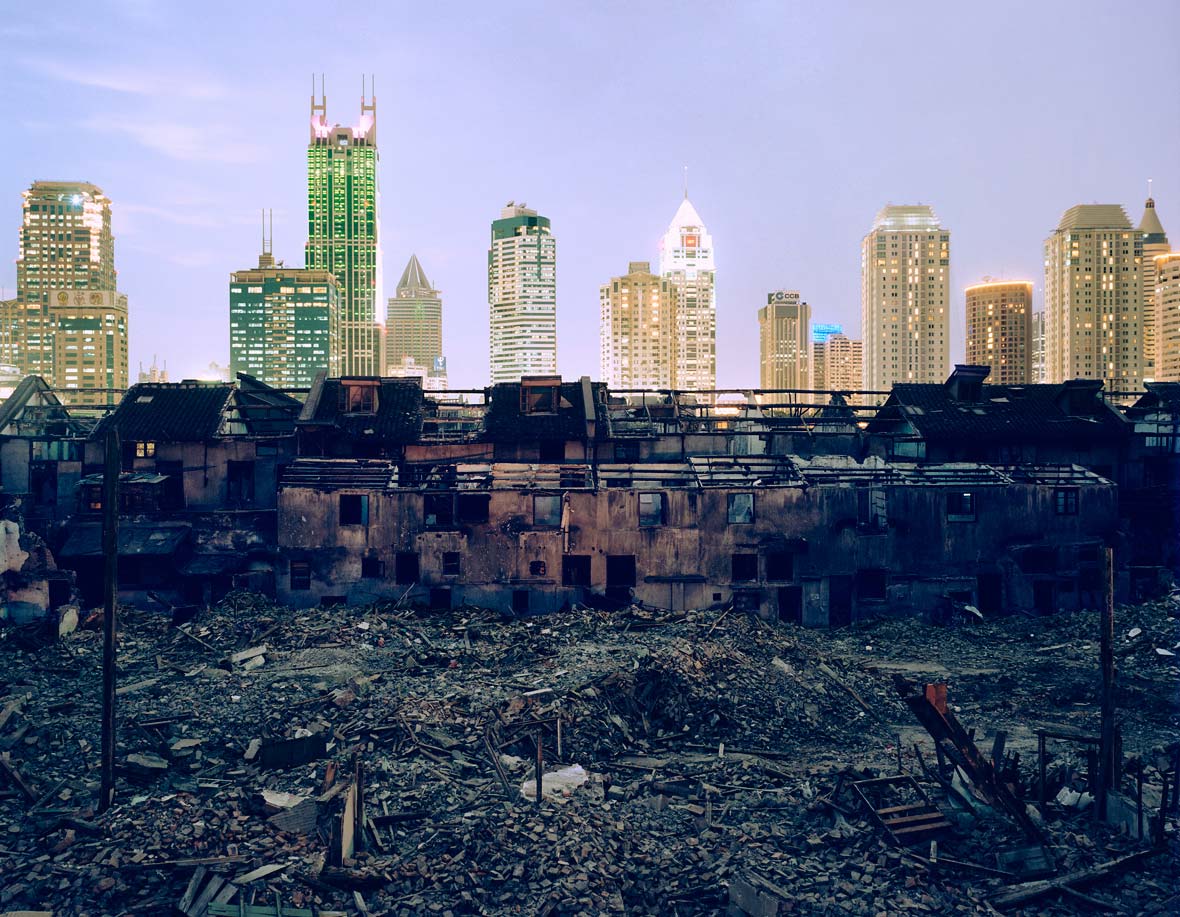
Neocha: Urbanization happened rapidly, and even violently at times, in China. House demolition has always been a very controversial and sensitive topic in China. How did you feel when you first saw these ruins in the centre of the city?
Greg Girard: What struck me was less the ruins themselves, but more so the fact that people were still living amid them as buildings were being demolished—sometimes even the very building they lived in. The occupancy wasn’t always apparent during the day, but in the evening you could see the lights in the windows of the still-occupied homes, signs of life amidst the rubble and half-demolished buildings. Those scenes suggested defiance at one extreme, and obliviousness at the other as this wave of demolition and construction swept through the city.
Neocha: 中国的城市化进程在是非常激进且暴力的,拆迁在中国也一直是个非常具有争议的话题,当你第一次亲眼看到这些城市中心的废墟时,有什么感想?
Greg Girard: 最让我震惊的并非这片废墟,而是看到人们还住在这些因为拆迁而变得残破不堪的建筑(有些是自家的房子)里。白天其实是看不出来的,只有晚上的时候你还能看见住家窗户里的灯光,在残砖破瓦和一半被拆掉的建筑里,展露着生命的痕迹。这样的场景也好像在反抗着,嘲笑着这一轮极端且无知的拆建对这座城市的清扫。
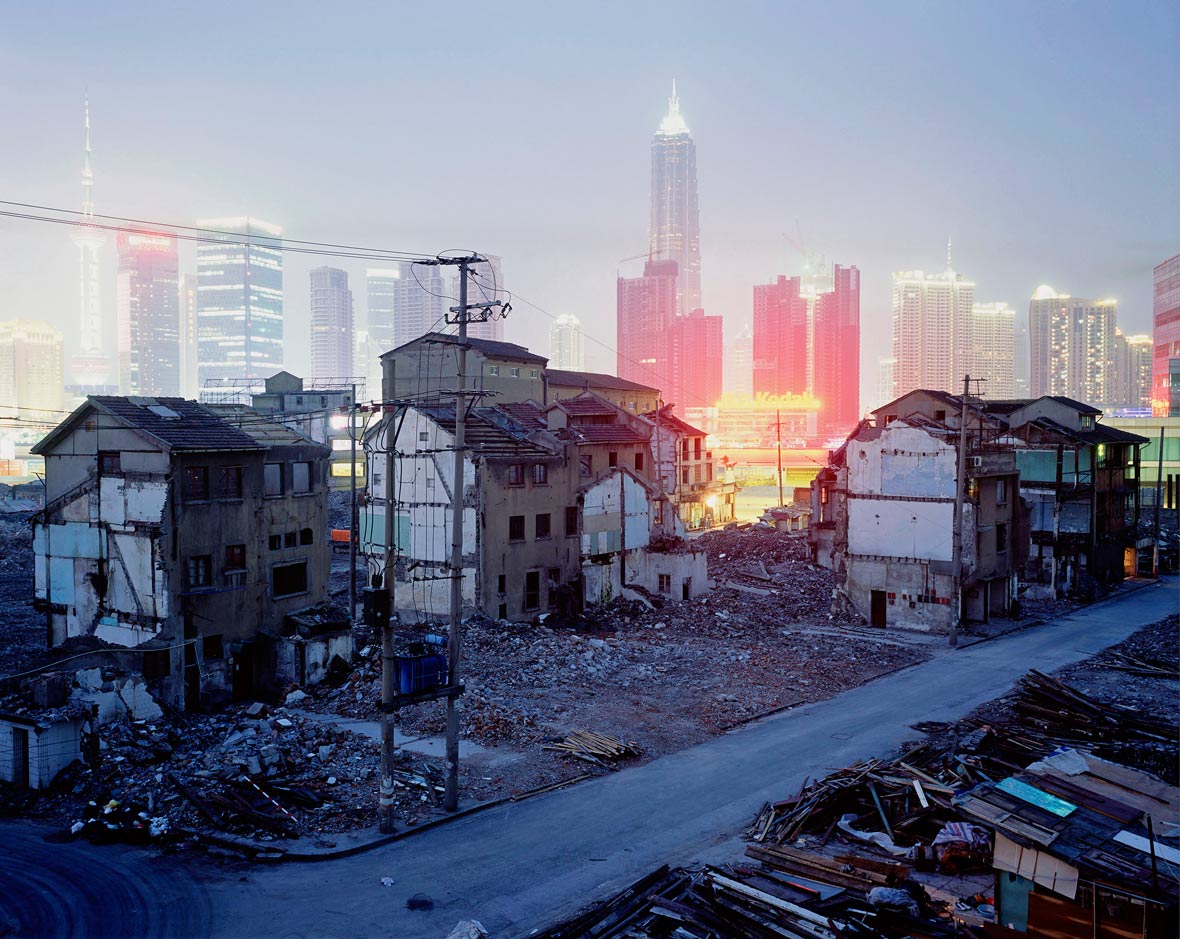
Neocha: The idea of house demolition is a familiar yet unfamiliar occurance for me and many people who grew up in a Chinese middle-class family. What makes it familiar is that we constantly see news report about demolition disputes on TV, but most of us actually never experience it. From a perspective of a foreigner, how do you feel about these demolitions?
Greg Girard: China was more or less isolated for three or four decades (from 1949 onward). The familiar churn of urban development for profit didn’t take place in the gradual way that it does in most large cities in capitalist societies. It started happening all at once, which was during the 1990s in Shanghai’s case, after Deng Xiaoping declared that Shanghai should “catch up”. And so the city experienced urban demolition and construction that usually might take place gradually, over decades, happening on a scale and at a pace that had never been seen before. It was terrifying, and fascinating, and to some extent sad. Clearly there was an opportunity to preserve individual buildings, and entire neighborhoods even, that were architecturally significant and historically valuable; an opportunity, it turned out, that would be ignored on a breathtaking massive scale. So, on one hand there was a sense of a squandered opportunity and on the other there was the sense that it was an accident that the buildings and neighborhoods, preserved by indifference and neglect, had survived as long as they had.
Neocha: 对于很多像我一样成长于中产家庭的人,对于拆迁这个概念既熟悉又陌生,熟悉的是我们经常在新闻上看到关于拆迁的纠纷报道,陌生的是我们似乎在现实中又不曾经历过,站在一个外国人的角度,你对这拆迁这个事是怎么看的?
Greg Girard: 因为中国在过去的三四十年(从1949年开始)里基本上是与世隔绝的,所以它并不是像大部分资本主义大型城市那样逐步的发展,而是一次性的爆发了,拿90年代的上海举个例子,在邓小平指出上海应该“赶上”后,这座城市经历了本应是循序渐进却实非如此的拆迁和建造,在过去的几十年里,用一个前所未见的速度和规模发展着。这是令人恐惧也是惊奇的,在某种程度上也让人感到悲伤。显然是有机会能够保存某些独立的建筑甚至整片居民区,但遗憾的是这个机会被大规模的忽视掉了。所以一方面,很多机会就被这么白白浪费掉了,另一方面很多建筑和居民区意外地被忽视掉,从而被保留下来,才至今得以幸免。
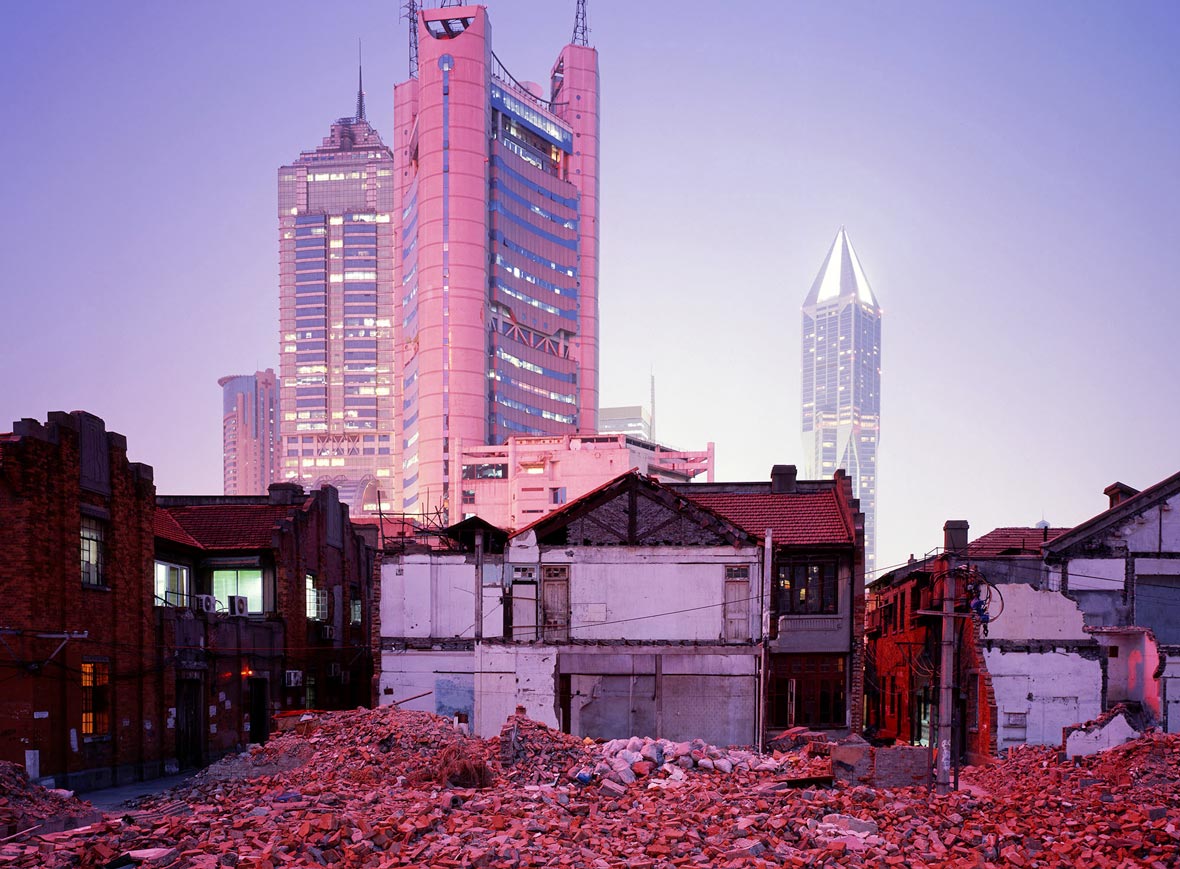
Neocha: Because of the rapid urbanization in China in the last few decades, for many locals, their memories on many things is disconnected. Part of this series seems very intimate, such as the shots of bedroom or bathroom. When you went into their very private space, did you talk to the people who live there? When facing this rather vulnerable group who are unable to fight back against the massive strong arm of the government, it almost feels like their memories are being erased. Are you attempting to capture a certain sense sadness in your work?
Greg Girard: I was fortunate that people were, for the most part, willing to allow me into their homes, including bedrooms and bathrooms, when requested. The shared nature of domestic life was one of the elements I was trying to show. For example, homes built for one family that had been subdivided to accommodate multiple families. What does that look like and how does it work? In other cases, I simply wanted to see the choices people made in terms of how they lived and what they saw when they went to bed at night or woke up in the morning, knowing in many cases that these homes were of the verge of being demolished. So, I think it’s not wrong to say, as you do, that memories are being erased. As for sadness: Yes. Helplessness in the face of the unchecked power is of course tragic.
Neocha: 因为中国过去的城市化,很多中国人的回忆是断层的,这个系列中的有些作品是非常私密的,拍摄于卧室或者厕所,甚至是一些老照片。当你在深入这些住家时,你是否会与他们交谈过?面对着这些城市巨大变迁中的弱势群体,他们的一些回忆似乎也被一起抹去了,你是否在你的作品中尝试去捕捉这种悲伤的感觉?
Greg Girard: 我很幸运,大部分人都愿意让我进他们家中去拍摄,当我要求进入厕所或者卧室时,他们也欣然同意了。中国人乐于分享的本性也是我想要去展现的,举个例子,一家人居住的房屋已经被改装成了可容纳多个家庭的内部结构。我也是单纯地是想了解人们在知道自己住的房子马上就要被拆掉了,他们做的选择,怎么居住的,晚上睡前或早上刚醒时会看些什么。所以,你讲的也没有错,很多记忆都被抹掉了。对于这种悲伤,是啊,面对这种盲目力量的无力是悲剧的。
Neocha: The houses in your works almost looks like an island on top of ruins. To me, it seems to represent both persistence and resignation. Many people forced to relocate have mixed feelings about house demolition; some people are actually thankful since it allows them to move into a much nicer apartment and receive monetary compensation from the government. Others rather stay in the place where they grew up. What’s your take on this? What are some of the more memorable moments of shooting this projects?
Greg Girard: During the beginning of the project (2000-2001) when I set up my tripod and camera and was photographing in a neighbourhood, I was often asked by residents if I (or someone) was planning to buy the property. Because, as you noted, this could mean that the tenants (those with residency rights rather than actual ownership) would be entitled to resettlement in a self-contained apartment. Most of these older buildings were not meant to house as many people as they did, which meant that residents had to share a kitchen, a bathroom and toilet facilities. These places looked quite grand—in a faded sort of way—from the outside, but on the inside they were very difficult to live in. Most of them, in their public areas, hadn’t received a coat of paint in forty, fifty years, or more. Photographing inside one hallway, I remember thinking that the peeling paint on the walls had probably been applied at some point in the 1930s.
Neocha: 照片中的楼房看上去像是废墟上的一座座孤岛,在我看来暗示了一些坚持与放弃。拆迁对于很多拆迁户是个悲喜交加的事情,有的人可以借此机会分配到很好的住宅或是费用,而有的人则十分保守,不愿意离开陪伴自己一辈子的土地。在你的拍摄中是否也碰到过类似的事情呢?令你印象最深的是哪件事?
Greg Girard: 在创作这个系列最初的时候(2000-2001年),当我在居民区里摆好三脚架和相机进行拍摄的时候,周围的居民经常问我(或别人)是不是要买这些房产。因为就像你讲的一样,这些住户(有居住权但是没有所以权的人)能够有机会被重新安置到独立的公寓。很多老的建筑不是为了居住大量人口而设计的,因此住户必须共享厨房,浴室和厕所。这些地方退远从外看是很不错的,但是内部是非常不适宜居住。大部分这些建筑,公共区域墙上的油漆已经四五十年没有更新过了。我记得我在过道中拍摄过的一张照片,当时的想法是到墙上剥落的油漆应该是在20世纪30年代刷的。
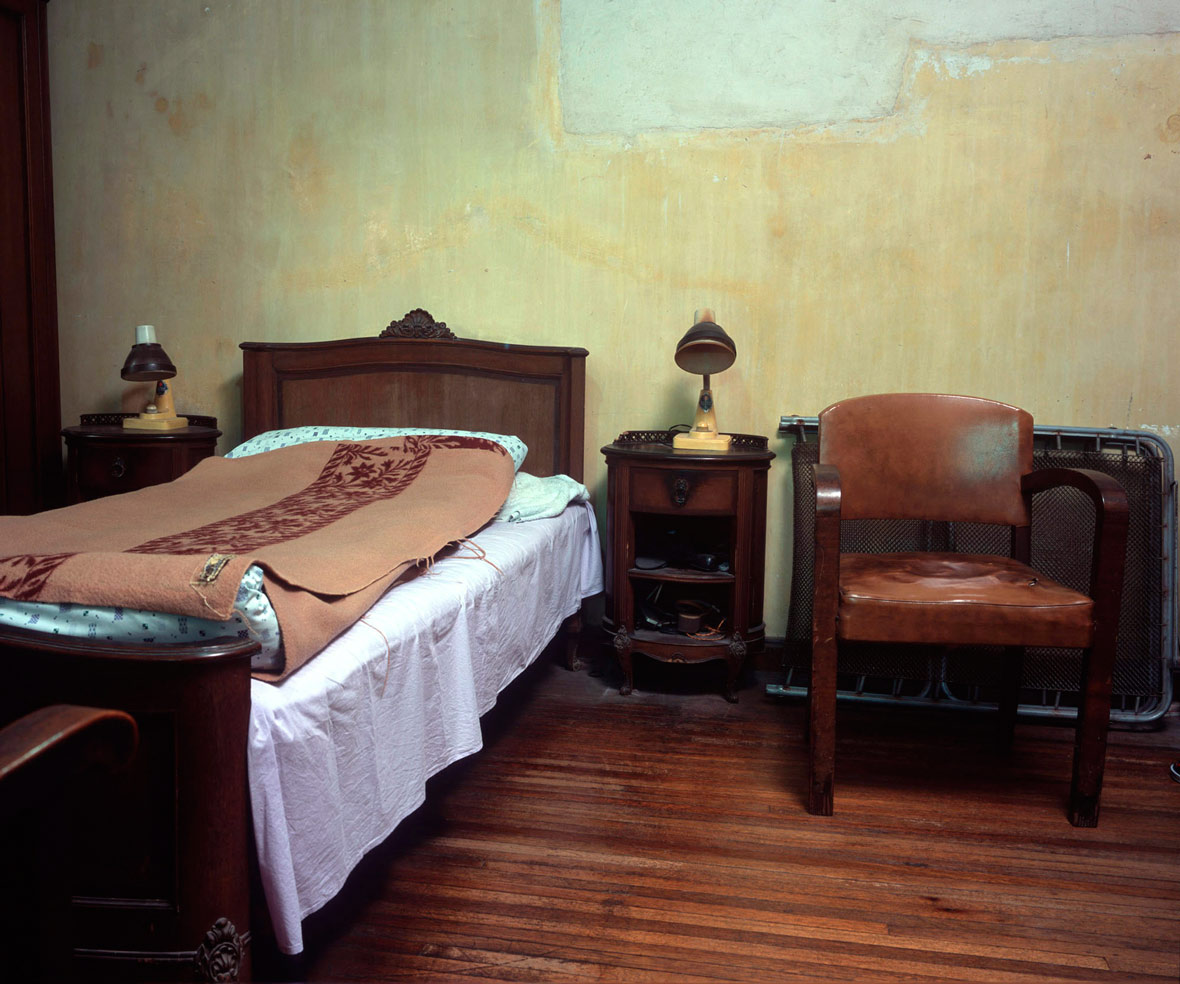
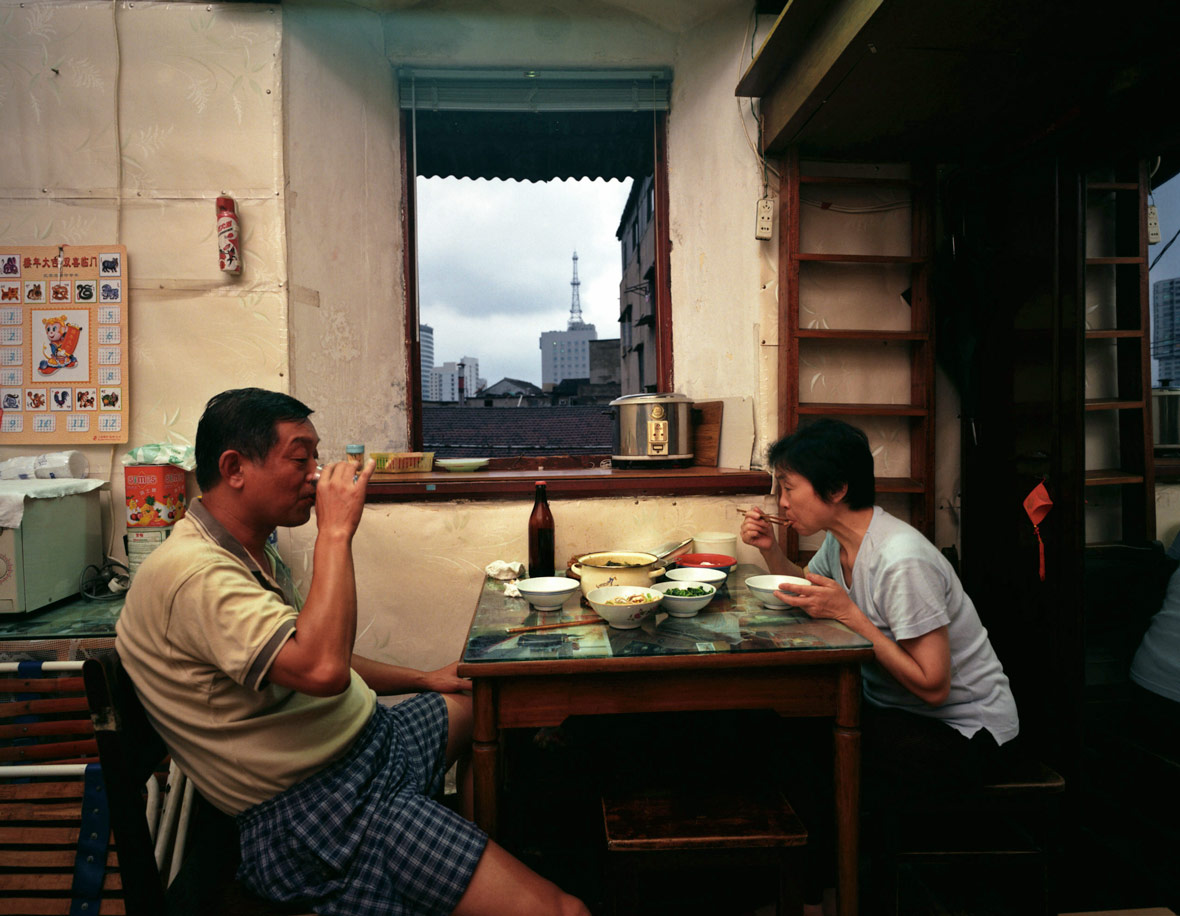
Neocha: Urban redevelopment has always been a major goal of Chinese urbanization. However, the interesting thing is that old Shanghai’s architectural style is extremely complex, being a mixture of European and Chinese style, which gives shikumens their unique character. But after the redevelopments, they’re becoming more and more modern. The unique character of the city also seems to be fading away alongside. What is your take on this?
Greg Girard: I think it’s quite rare for a government—whether in China or wherever—to make enlightened choices about architecture or public space or understand the projected experience of being a city dweller. So I’m not surprised when a union of government and property developers produce ghastly results. Having said that, I am surprised when something decent and human comes out of that, as it occasionally does.
Neocha: 旧城改造一直是中国城市化建设的重点,而有趣的是上海的老城区中建筑风格极为复杂,欧式与中式的混杂使得石库门里弄格外特殊,而改建后的现代建筑则少了些许韵味。这个城市一些独特的特征也在逐渐的消失,你对此是怎么看的?
Greg Girard: 我认为,无论在中国还是在其他国家,政府要在考虑建筑或公共空间与理解居民的生活体验之上做出明智的选择是相当罕见的。所以当看到政府和房地产开发商联合推进下产生的可怕后果也并不感到惊讶。而回过头来,当我从中看到了一些偶尔出现的恰当和充满人文关怀的措施,反而感到有些意外。
Neocha: We can see the demolished building is next to the modern skyscraper, one side is the scene of the broken and destruction, another side is a fancy shopping mall. This contrast is often seen in your work, is it intentional?
Greg Girard: As much as those sorts of contrasts can result in boring clichéd pictures, the scope of what was happening in Shanghai meant that those contrasts were inescapable. The challenge was how to show that without making a cliché. But at the end of day, if the pictures manage to escape being clichés then it’s only because the demolition and construction was happening on such a scale that it doesn’t make sense for the photographer to frame things artificially to illustrate a tired cliché. That scene was the absolute reality. And so, to make these pictures without showing this historical moment of “contrast” (by showing, for example, only intact, romanticized, historic neighborhoods) would have been unthinkable, artificial, a lie.
Neocha: 我们可以看到有很多拆迁的建筑边上便是新建的商业化区域,一边是断壁残垣的破败景象一边则是金壁辉煌的购物商城。这样的对比在你的这些作品中也经常出现,你是否是刻意安排这样的构图?
Greg Girard: 虽然那样的对比一多就会陷入无聊和平庸的构图,但要记录上海正发生的画面,这样的对比不可避免。最大的挑战在于如何呈现这样的对比且不沦为老套做作。但如果摄影在最后都在想办法避免平庸老套,那只能是因为如此大规模的拆迁和建设超出摄影师的理解,从而无法通过讨巧的构图去诠释一个俗套的主题。那样的场景也绝对存在。因而,没有展现历史进程中“对比”(例如只表现出完整的、充满浪漫色彩的历史街区)的图片是难以想象的,也是带着人为角度的谎言。
Neocha: This series of work was completed almost ten years ago, have you revisited these locations you shot? When you see it has changed to skyscrapers, how you feel about that? Did you ever wonder where are all the people who live there? How their life was?
Greg Girard: I still visit Shanghai fairly often, though I tend not to seek out the locations I photographed when I worked on the project between 2001 and 2006. Sometimes I come across them by accident though. Visiting a new museum, a restaurant, a friend’s apartment, or driving on a new road, I might realize that something looks familiar and think, “Didn’t this used to be here…?” But then the moment passes and you’re back in Shanghai’s latest version of itself.
Neocha: 这系列作品是拍摄于十年前,后来你又再去这些地方看看吗?当你看到这些在这片废墟上拔地而起的高楼大厦时,你内心又是怎么想的呢?你会想知道那些曾经住在这里的人们,他们现在过着什么样的生活吗?
Greg Girard: 我到现在都时常去上海,但我不会刻意去重访那些在2001年至2006年的摄影项目里出现过的旧地。不过也有时候会偶然遇到它们。参观新的博物馆,光顾一家餐厅,去一个朋友的公寓,或在一条新修道路上开车……我都有可能会意识到这是我曾熟悉的场景,然后思考:“这个曾经在这里吗?”但那样的恍惚转瞬而逝,旋即又回到了这个当下的上海。
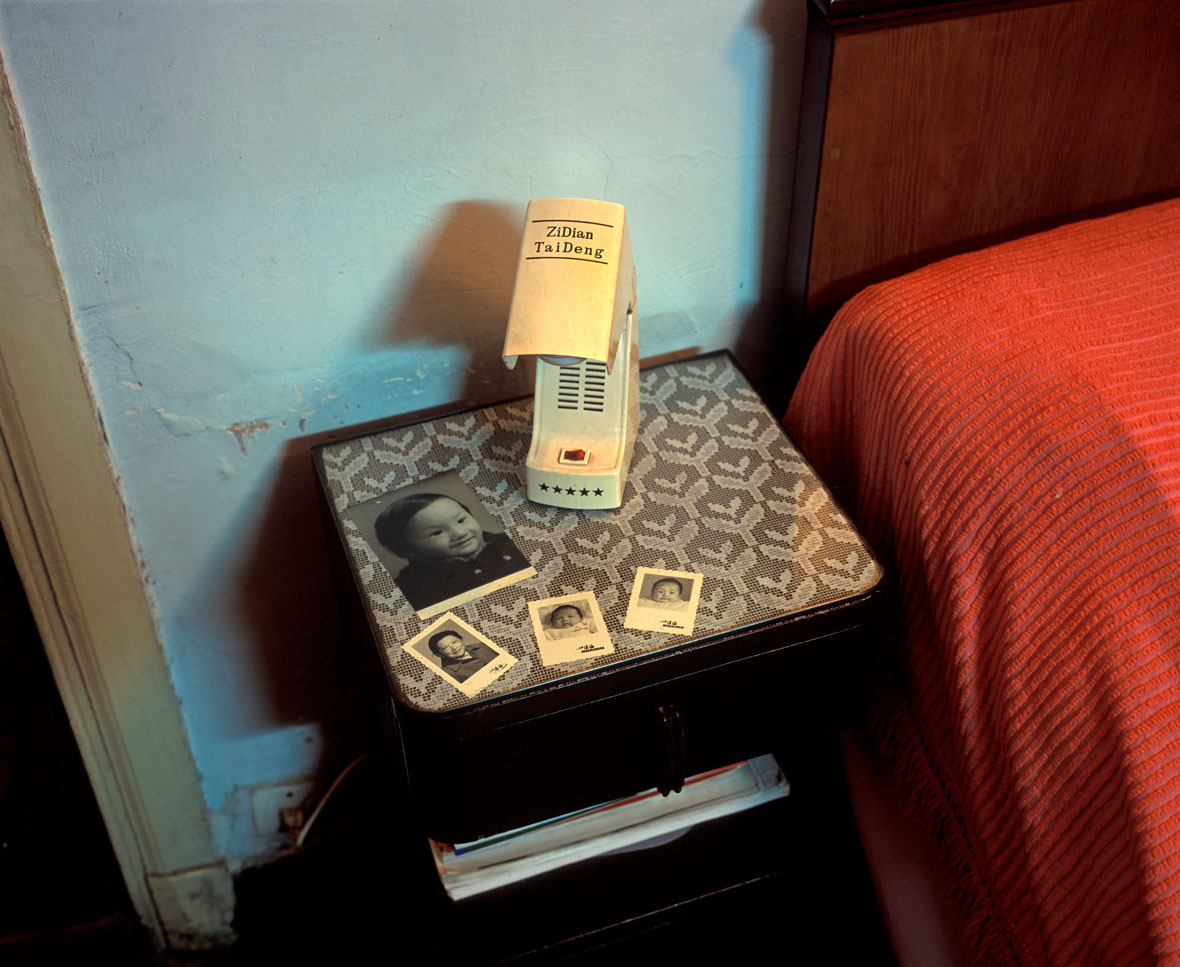
Neocha: You works seems like a documentation of memories of city, compare to other city that you shoot or lived before, such as Hong Kong, Hanoi or Vancouver, is there anything that makes Shanghai feel different from the rest of these cities?
Greg Girard: I first visited Shanghai in 1983, and at that time the city’s built environment was almost completely unchanged from 1949. It was like arriving in a city that had been frozen in time, in terms of its surface at least. Only the street signs, having been entirely renamed after 1949, appeared to have changed. Much later, in 1998, I moved to Shanghai from Hong Kong, and amidst the vast redevelopment taking place, I still had this memory of being in the city not too many years ago and realized how much had changed since then. I knew that I didn’t want to make something nostalgic about “disappearing Shanghai”, but at the same time, I felt that what I was seeing was unprecedented. Already there was a growing sense of loss at the disappearance of so many historic buildings. But from what I’d already seen, taking photographs inside some of these buildings, I felt that it was more than the buildings themselves; it was a whole way of life in Shanghai that was disappearing: living in close quarters in lane housing and in individual buildings, where neighbors had to share more of their lives than they might necessarily want to. In other places, I’d always photographed the “now” without thinking too much about “then”. But in Shanghai it seemed I was photographing right inside the rapidly closing gap between “now” and “then”. That gap was actually there and photographable, though it was clear that it wouldn’t be for long.
Neocha: 你的作品似乎都在记录某种城市的记忆,和你作品中的其他城市,像是香港,河内或者温哥华相比,你觉得记录上海有什么与众不同的吗?
Greg Girard: 我在1983年第一次来到上海,那时这里的建筑与1949年相比几乎没有什么改变。至少从城市外观来说,感觉就像来到了一个被时间冻结的城市。只有一些街牌因为在1949后全新重命名而看上去有些变化。很久之后的1998年,我从香港搬到上海,见证着这个城市重新开发的进程,我仍然记得这个城市几年前的样貌,然后意识到这里从那时开始就已经发生了如此之大的变迁。我知道我并不是想对“消逝的上海”表现出一种怀旧的情绪,但当下我感到自己所见所闻史无前例。当诸多带着历史记忆的老建筑拆迁之后,那种失落感就已经在日益膨胀。不过就我所看到的,以及通过拍摄建筑内部的生活场景,我想失去的不仅仅是上海建筑的本身,更是上海曾经的一整套生活方式:里弄住宅和独栋建筑里的狭小生活空间,邻里不得不共享一些可能并非出自他们本愿的生活空间。在其他地方,我在拍摄“此刻”的时候常常不愿意去考虑太多“过去”。但是在上海,我觉得自己就像是在拍摄“此刻”和“过去”之间正在快速退场的距离,那个距离是如此真实,可供拍摄,但有一点也很清楚,它不会存在太长的时间。


